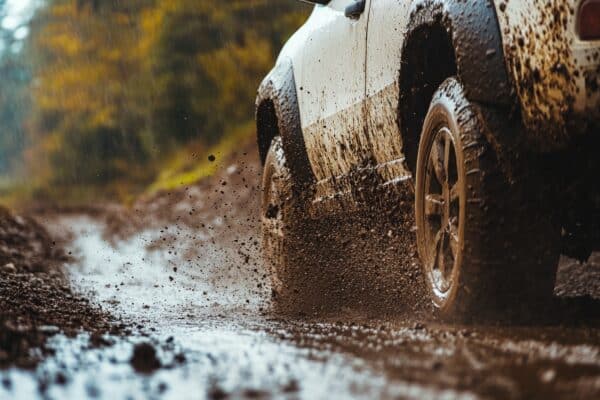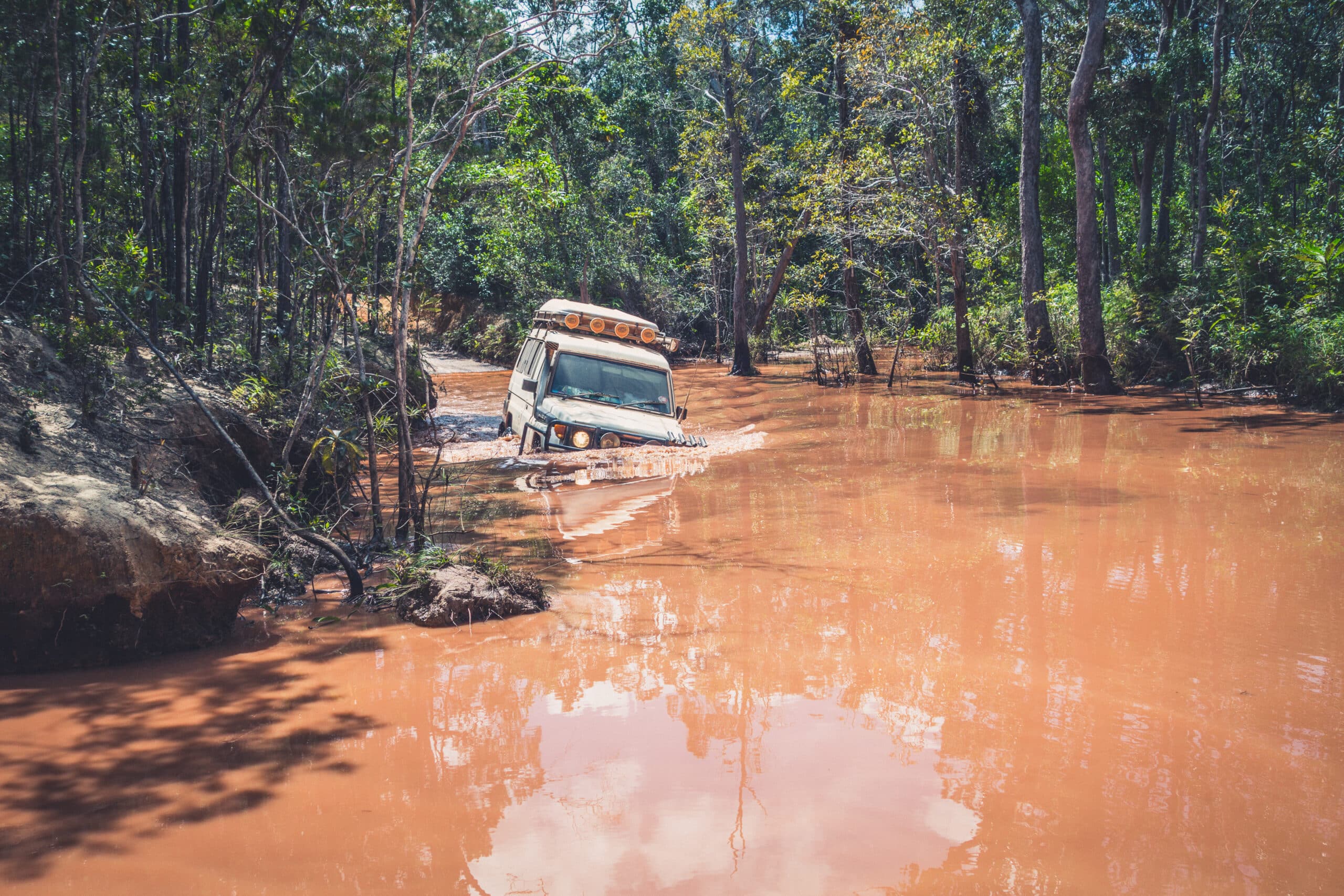Driving through mud is a thrilling part of offroad adventures, but it’s also one of the trickiest terrains to navigate. Without proper preparation and technique, your 4WD can easily get bogged, leaving you stuck in a sticky situation. To keep your journey smooth and stress-free, here’s a complete guide on how to avoid getting bogged when driving through mud.

1. Assess The Mud Before Entering
Before you attempt to drive through mud, it’s essential to evaluate the situation. Mud can vary greatly in depth, consistency, and surface beneath.
How to Assess Safely:
- Walk the Track (If Safe): Use a stick to test the depth and feel of the mud. Check for hidden obstacles like rocks, roots, or holes.
- Observe the Surface: Is the mud wet and sticky or dry and crumbly? Sticky mud tends to be more challenging.
- Look for Existing Tracks: Fresh tracks can indicate a passable route, while deep ruts may signal trouble.
Pro tip: If the mud appears too deep or risky, look for an alternative route.
2. Prepare Your Vehicle
Before tackling muddy terrain, make sure your 4WD is set up to handle the challenge.
Vehicle Preparation Steps:
- Engage 4WD: Always use low-range 4WD for better torque and control.
- Deflate Tyres: Lower tyre pressure to around 20–25 PSI to increase traction.
- Use Mud-Terrain Tyres: If you frequently encounter mud, consider investing in tyres specifically designed for muddy conditions.
- Check Recovery Gear: Ensure you have a snatch strap, traction boards, a shovel, and a winch ready to go.
Pro tip: Fit your vehicle with a snorkel if there’s a chance of encountering deep mud or water.

3. Choose The Right Driving Line
The path you take through the mud can make all the difference in maintaining traction and avoiding bogging.
How to Pick Your Line:
- Follow Existing Tracks: These are often the safest routes as they’ve been compacted by previous vehicles.
- Stay in the Centre: If no tracks exist, aim for the centre of the track where the ground is typically firmer.
- Avoid Deep Ruts: Driving in deep ruts can cause your vehicle’s undercarriage to get stuck.
Pro tip: Walk the line you plan to take to ensure it’s free of obstacles and manageable for your vehicle.
4. Maintain Momentum
Momentum is key to driving through mud without getting stuck. Stopping or losing speed can cause your tyres to dig in, leaving you bogged.
Tips for Maintaining Momentum:
- Use Low Gear: Stick to first or second gear in low range to maintain a steady speed.
- Smooth Acceleration: Apply gentle, consistent throttle to avoid wheel spin.
- Avoid Sudden Stops: Keep your momentum going, even if the mud feels soft or sticky.
Pro tip: If you feel your tyres losing traction, ease off the accelerator slightly to let them regain grip.

5. Steer Smoothly
Sharp turns and aggressive steering can cause your tyres to lose traction, making it harder to navigate the mud.
Steering Tips:
- Avoid Oversteering: Make small, smooth adjustments to your steering to maintain control.
- Follow the Track: Let your tyres naturally follow the ruts or track you’ve chosen.
- Don’t Fight the Vehicle: If your vehicle starts to slide slightly, steer gently into the direction of the slide.
Pro tip: Keep both hands on the wheel for maximum control, especially in slippery conditions.

6. Know When To Stop And Recover
If your vehicle starts to bog down, it’s often better to stop and assess the situation rather than spinning your tyres and making things worse.
When to Stop:
- You lose forward momentum despite steady acceleration.
- Your tyres are spinning and digging deeper into the mud.
- The mud is up to your vehicle’s undercarriage.
Recovery Steps:
- Dig Out the Tyres: Use a shovel to clear mud from around your tyres and create a path.
- Deploy Traction Boards: Place traction boards under the tyres for grip.
- Lower Tyre Pressure Further: Reduce pressure by another 5 PSI to increase traction.
- Use a Snatch Strap or Winch: If another vehicle is available, use a snatch strap for recovery. Otherwise, use a winch if your vehicle is equipped with one.
Pro tip: Don’t panic—recovery is a normal part of offroad driving, and preparation is key.
7. Avoid Common Mistakes
Even experienced drivers can make errors in muddy conditions. Knowing what to avoid can save you time and frustration.
Common Mistakes to Avoid:
- Flooring The Accelerator: This causes your tyres to spin and dig deeper into the mud.
- Changing Gears Mid-Crossing: Shifting gears can disrupt momentum and increase the risk of bogging.
- Driving Alone: Always travel with at least one other vehicle when tackling muddy or remote tracks.
Pro tip: Practice driving in muddy conditions in a controlled environment to build confidence and skills.
8. Clean Your Vehicle After the Trip
Mud isn’t just challenging to drive through—it can also cause long-term damage if not cleaned off properly.
Post-Trip Cleaning Tips:
- Wash the Undercarriage: Mud can trap moisture and cause rust if left on for too long.
- Check Tyres and Brakes: Inspect for mud buildup that could affect performance.
- Clean the Engine Bay: Use a low-pressure hose to remove mud from sensitive components.
Pro tip: Use a mud spray or degreaser to make cleaning easier and more effective.
Driving through mud is one of the most exciting aspects of offroading, but it requires preparation, skill, and patience. By assessing conditions, preparing your vehicle, and using proper techniques, you can avoid bogging down and enjoy a smooth ride. Remember to always travel with recovery gear, and don’t hesitate to ask for help if needed. With the right mindset and preparation, you’ll be ready to tackle muddy tracks with confidence.







